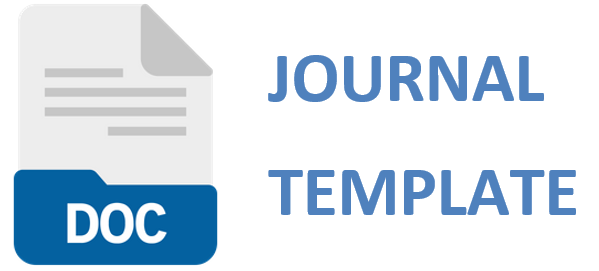
Author Guidelines
MANUSCRIPT TITLE
The title of the paper should be concise and informative. Avoid abbreviations and formula where possible. It should be written clearly and concisely describing the contents of the research.
AUTHORS
Manuscript has main author and co authors with full name of the author and co-authors (no abbreviation), includes affiliations address (es) and email addresses clearly.
ABSTRACT
The abstract comes after title page in the manuscript. Abstract must be integrated and independent which is consist of introduction and purpose, methods, results, conclusion and suggestion. However the abstract should be written as a single paragraph without these headers. For this reason, References should be avoided. Also, non-standard or uncommon abbreviations should be avoided, but if essential they must be defined at their first mention in the abstract itself. Abstract must be written using 150 until 200 words which has no reference and accompanied keywords.
KEYWORDS
The keywords should be avoiding general and plural terms and multiple concepts. Do not use words or terms in the title as keywords. These keywords will be used for indexing purposes. Keywords should not more than 5 words or phrases in alphabetical order.
INTRODUCTION
State the objectives of the work and provide an adequate background, avoiding a detailed literature survey or a summary of the results. Explain how you addressed the problem and clearly state the aims of your study. As you compose the introduction, think of readers who are not experts in this field. Introduction must be written should not more than 12 pages.
METHODS
It should be mention time and place of research in first part. All methods that used such matemathics for analysis, treatment and experimental design must be stated clearly and briefly. State the objectives of the work and provide an adequate background, avoiding a detailed literature survey or a summary of the results. A Theory section should extend, not repeat, the background to the article already dealt with in the Introduction and lays the foundation for further work. a Calculation section represents a practical development from a theoretical basis. Methods must be written using 400 until 600 words.
RESULTS AND DISCUSSION
Result and discussion must be written in the same part. They should be presented continuously start from the main result to the supporting results and equipped with a discussion. Unit of measurement used should follow the prevailing international system. All figures and tables placed separately at the end of manuscript pages and should be active and editable by editor.
CONCLUSION
Conclusion should be explained clearly. Suggestion placed after conclusion contains a recommendation on the research done or an input that can be used directly by consumer. Conclusion and suggestion must be written using 40 until 80 words.
ACKNOWLEDGEMENT
State the grant source and the person to whom the grant was given. Name the person to help you work.
REFERENCES
References of your manuscript must be up to date (in the last of 5 to 10 years and minimum of 15 references that 80% of the references is from journal) and your reference can be accessed by anyone. Format of the references for submitting manuscript on this journal with style of APA, which can be done in MS Word. Reference of your manuscript is organized alphabetically. Here are example references format with style of APA. Please input your references using Mendeley Application to facilitate you as an Author. Download Mendeley Application or Download EndNote Application.
Example
Calero, C., Piatiini, M., Pascual, C., Serrano, M.A. (2009). Towards data warehouse quality metrics. Proceedings of the 3rd Intl. Workshop on Design and Management of Data Warehouses (DMDW), Interlaken, 39, 2-11. (In this case, city: Interlaken, year: 2009, Volume: 39, page: 2-11).
Fauzi, W.I.M., Muhammad, N., Mokhtar, S.S.M., Yusoff, R.Z. (2016). What motivate Muslim consumer to patronage Islamic based-retail store?. International Review of Management and Marketing, 6(S7), 199-203. (In this case Vol. 6, Issues S7, and page 199-203).


